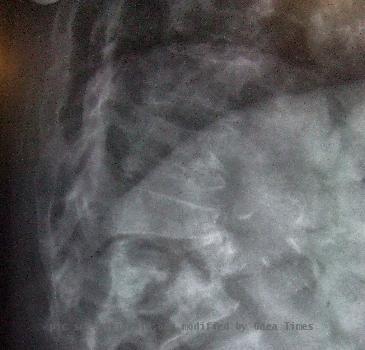Drugmaker Merck says it will fight $8 million compensatory damages verdict in Fosamax trial
By Linda A. Johnson, APFriday, June 25, 2010
Merck hit with $8 million verdict in Fosamax trial
TRENTON, N.J. — Drugmaker Merck & Co. said it will challenge its first loss in a trial blaming its osteoporosis drug for destroying a patient’s jawbone after a federal jury on Friday awarded $8 million to the Florida woman.
The U.S. District Court jury in New York awarded that amount in compensatory damages to Shirley Boles, 72, of Fort Walton, Fla., who alleged Merck’s Fosamax destroyed her jawbone near her ears, causing serious pain and disability.
“She feels vindicated, absolutely vindicated,” said her attorney, Timothy O’Brien.
The three-week trial ended after nearly four hours of deliberations Friday by a jury of three men and four women. It was the second for Boles, a retired sheriff’s deputy in the sex crimes unit in Oskaloosa County, Fla. Her first trial ended last September in a mistrial.
The jury concluded that Fosamax was “unreasonably dangerous due to defective design, and that its defective design was a legal cause of Mrs. Boles’ injury.”
Merck attorney Paul Strain said Friday’s verdict doesn’t match the evidence, so Merck will challenge the decision. Strain plans to file a motion on July 16 asking U.S. District Judge John Keenan to either reverse the verdict, in Merck’s favor, or set it aside and order a new trial. If that fails, Strain plans to appeal to the Second Circuit Court of Appeals in Manhattan.
Boles took Merck’s Fosamax for about 10 years, from 1997 through 2006, and suffered repeated jaw problems and complications after two tooth extractions in 2002. She was hospitalized for several days in 2004 to treat her condition.
O’Brien said his client’s decayed jaw bone drains through sores in her chin and she can only eat soft foods that don’t require chewing. A doctor testified her condition has worsened and the great-grandmother will need to have parts of her jawbone cut out and replaced with other bone, said O’Brien, of the Levin, Papantonio law firm.
O’Brien said his evidence showed that Fosamax provides no benefit in preventing bone fractures for women like Boles, who did not have osteoporosis. She had osteopenia, a condition in which bone density is beginning to decrease, and Fosamax is approved for preventing fractures in such women.
Merck, based in Whitehouse Station, said the woman’s dental problems were due to heavy smoking and periodontal disease.
“We have many strong grounds” to challenge the verdict, Strain said. “The jury’s verdict was a direct result of (plaintiff’s) counsel’s inflammatory and prejudicial remarks.”
Strain said the verdict was not what Merck had wanted and that the company is “committed to fighting these cases.”
Merck, which has been paying out a $4.85 billion settlement to end roughly 50,000 lawsuits alleging its former painkiller Vioxx caused heart attacks and strokes, faces more than 1,400 lawsuits alleging Fosamax harmed patients.
Two other Fosamax cases have come to trial. Strain said that in one, a jury voted in Merck’s favor and in the other, a judge entered a summary judgment in Merck’s favor.
The next Fosamax trial is scheduled to begin on Nov. 1.
Fosamax was once Merck’s second best-selling drug, and the heavily advertised pill dominated the category of bone-preserving osteoporosis drugs until it got generic competition a few years ago. Fosamax had peak sales of $3.2 billion in 2005.
(This version CORRECTS to clarify that jury found Fosamax defective)
Tags: Bone Fractures, Diseases And Conditions, Florida, Injuries, New Jersey, North America, Seniors' Health, Trenton, United States

